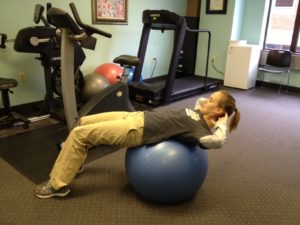1. Wear boots or shoes with textured soles. Avoid shoes that have smooth surfaces on the bottom.
2. Watch where you walk. Avoid dark and shiny patches. Walking on the snow will give you better traction.
3. Avoid being off-balanced by carrying things in your hands. Use a backpack if you are walking long distances and keep your hands out of your pockets so you can use them for balancing yourself.
4. Take small, quick, shuffling steps if you are walking through an icy spot and keep your weight slightly forward. It’s usually better to fall forward than it is to fall backwards.
5. Make sure you remove snow quickly from your steps or walk before it hardens and turns icy. Put some type of ice melt product down to ensure it won’t be slippery.
6. Avoid walking in shaded areas where ice tends to build up.
During the winter, physical therapists see many patients with injuries from falling on the ice. Thinking ahead and taking your time could prevent a lot of bruises, sprains and even fractures.

